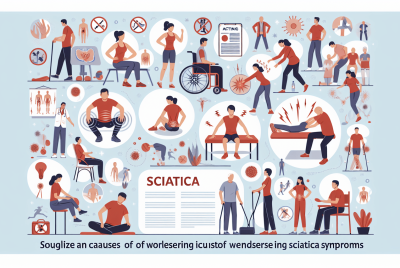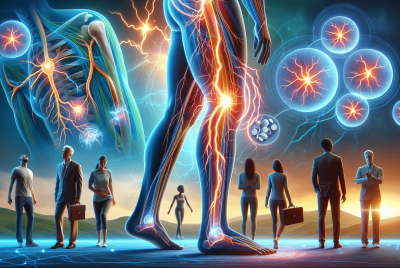How Do You Fix A Sore Back Muscle?
Having a sore back muscle can be a real pain, literally! Whether it’s a result of strenuous activity, poor posture, or even just sleeping in an awkward position, dealing with a sore back can put a damper on your day. But fear not, because in this article, we’ll explore some tried-and-true methods that can help alleviate the discomfort and get you back on track. So, if you’re tired of that nagging ache in your back, keep reading for some tips on how to fix a sore back muscle.

Causes of a sore back muscle
Muscle strain
Muscle strain is one of the most common causes of a sore back muscle. This occurs when the muscle fibers are stretched or torn, often due to sudden movements, heavy lifting, or repetitive motions. It can lead to pain, inflammation, and stiffness in the affected area.
Muscle overuse
Overusing the back muscles can also result in soreness. This commonly happens when engaging in activities that require repetitive motions or prolonged exertion, such as lifting heavy objects, participating in intense physical activities, or maintaining poor posture for extended periods.
Poor posture
Maintaining poor posture for prolonged periods can put unnecessary strain on the back muscles, leading to soreness. Slouching, hunching over a desk, or constantly looking down at a phone or tablet can cause imbalances in the muscles and contribute to back discomfort.
Injury
Back injuries, such as falls, accidents, or sports-related incidents, can cause acute or chronic back muscle soreness. Trauma to the muscles, ligaments, or joints can result in pain, swelling, and limited mobility. In some cases, more severe injuries like herniated discs or fractures may require medical intervention.
Symptoms of a sore back muscle
Pain and stiffness
A sore back muscle often manifests as localized pain and stiffness. The discomfort may range from a dull ache to a sharp, stabbing sensation. The affected area may feel tender to the touch, and the pain may worsen with movement or certain positions.
Muscle spasms
Muscle spasms are involuntary contractions of the muscles and can accompany soreness in the back. These spasms can range from mild twitches to painful cramps, causing further discomfort and limited range of motion.
Limited range of motion
When the back muscles are sore, you may experience a limited range of motion. Movements such as bending forward, twisting, or lifting objects may become challenging and may provoke increased pain or muscle spasms.
Diagnosis
Medical history
To diagnose a sore back muscle, your healthcare provider will typically begin by taking your medical history. They will ask about your symptoms, any recent injuries or activities that may have caused the soreness, and any previous episodes of back pain.
Physical examination
A physical examination will be conducted to evaluate the affected area. Your healthcare provider may assess your posture, range of motion, and perform specific tests to identify the source of your back muscle soreness. They may also look for signs of inflammation or muscle imbalances.
Imaging tests
In some cases, imaging tests such as X-rays, magnetic resonance imaging (MRI), or computed tomography (CT) scans may be ordered to get a detailed view of the structures in your back. These tests can help identify any underlying conditions or structural abnormalities that may be contributing to your sore back muscle.
Electromyography (EMG)
If your healthcare provider suspects nerve-related issues, they may recommend an electromyography (EMG) test. This test measures muscle response and electrical activity, helping to determine if there is any nerve damage or dysfunction contributing to your symptoms.
Immediate home remedies
Rest
One of the simplest and most effective immediate remedies for a sore back muscle is rest. Avoid activities that worsen the pain and allow your muscles time to heal. This may involve taking a break from strenuous physical activities or finding ways to modify your daily routine to minimize strain on your back muscles.
Ice packs
Applying ice packs to the affected area can help reduce pain, inflammation, and muscle spasms. Place a thin cloth or towel between the ice pack and your skin to prevent ice burns, and apply for about 15-20 minutes at a time, several times a day.
Heat therapy
After the initial acute phase, applying heat to the sore muscles can help increase blood flow and promote relaxation. Use a heating pad, warm compress, or take a warm bath or shower to soothe your back muscles. Be cautious not to use heat therapy immediately after an injury or if there is any visible swelling.
Over-the-counter pain medication
Nonsteroidal anti-inflammatory drugs (NSAIDs) such as ibuprofen or acetaminophen can help relieve pain and reduce inflammation. Follow the recommended dosage instructions and consult with a healthcare professional if you have any underlying medical conditions or are taking other medications.

Physical therapy exercises
Stretching exercises
Stretching exercises can help improve flexibility, reduce muscle tightness, and alleviate soreness in the back muscles. Examples of stretches that may be beneficial include gentle forward bends, hamstring stretches, and gentle spinal rotations. It is essential to perform these exercises under the guidance of a qualified physical therapist.
Strengthening exercises
Specific strengthening exercises can help stabilize the back muscles and prevent future injuries. These exercises may include core strengthening exercises, back extensions, and exercises targeting the surrounding muscles to enhance overall support and stability.
Low-impact aerobic exercises
Low-impact aerobic exercises such as walking, swimming, or stationary cycling can promote cardiovascular health without placing excessive strain on your back muscles. Engaging in regular aerobic exercise can help improve blood flow, strengthen the muscles supporting your spine, and support the overall healing process.
Massage therapy
Deep tissue massage
Deep tissue massage involves applying firm pressure to release tension and knots in the deeper layers of the muscles. This type of massage can be especially beneficial for relieving chronic back muscle soreness and addressing underlying muscle imbalances.
Swedish massage
Swedish massage is a gentle and relaxing massage technique that can help reduce muscle tension and promote overall relaxation. It involves long, flowing strokes, kneading, and gentle tapping motions, which can provide relief from muscle soreness in the back.
Trigger point therapy
Trigger point therapy focuses on relieving specific areas of muscle tightness and discomfort. Skilled massage therapists can locate and apply pressure to trigger points in the back muscles, which are specific areas of increased sensitivity or knots. This therapy can help relieve pain and promote muscle relaxation.
Chiropractic care
Spinal adjustments
Chiropractors use spinal adjustments to realign the spinal vertebrae and relieve pressure on the nerves and surrounding tissues. These adjustments can help improve spinal function, reduce muscle tension, and address underlying issues that may be contributing to your sore back muscle.
Manual therapy
In addition to spinal adjustments, chiropractors may employ manual therapy techniques such as soft tissue massage, stretching, or mobilization. These techniques can help improve circulation, reduce muscle tightness, and enhance overall mobility and flexibility.
Electrical stimulation
Electrical stimulation involves the use of electric currents to stimulate the muscles and promote healing. It can help relieve pain, reduce muscle spasms, and improve blood flow to the affected area. Your chiropractor may recommend this therapy as part of your treatment plan.
Acupuncture
Fine needle insertion
Acupuncture involves the insertion of thin needles into specific points on the body to stimulate the flow of energy and promote healing. This traditional Chinese therapy can help alleviate back muscle soreness by releasing endorphins, reducing inflammation, and improving circulation.
Cupping therapy
Cupping therapy involves placing special cups on the skin to create a suction effect, promoting improved blood flow and relaxation of the muscles. This therapy can help alleviate muscle soreness in the back and may leave temporary marks or discoloration on the skin.
Electroacupuncture
Electroacupuncture combines traditional acupuncture with the use of electric stimulation. Small electric currents are delivered through the acupuncture needles, enhancing the therapeutic effects of the treatment. Electroacupuncture may be helpful in reducing pain and promoting muscle relaxation in the sore back muscles.
Topical creams and ointments
Topical analgesics
Topical analgesics such as creams, gels, or patches can provide temporary relief from back muscle soreness. These products often contain ingredients like menthol, camphor, or capsaicin, which create a cooling or warming sensation and help numb the area, reducing pain and discomfort.
Muscle relaxants
In some cases of severe muscle soreness, muscle relaxants may be prescribed to help relieve muscle spasms and promote muscle relaxation. These medications work by suppressing the nerve impulses responsible for muscle contractions.
Anti-inflammatory creams
Topical anti-inflammatory creams containing ingredients such as nonsteroidal anti-inflammatory drugs (NSAIDs) can help reduce inflammation, pain, and soreness in the back muscles. These creams are applied directly to the affected area and can provide localized relief.
Alternative treatments
Yoga
Yoga offers a holistic approach to help manage and prevent back muscle soreness. Gentle yoga poses can promote flexibility, strengthen the core and back muscles, and improve posture. Yoga also emphasizes deep breathing and relaxation techniques, which can reduce muscle tension and promote overall well-being.
Pilates
Pilates is a low-impact exercise method that focuses on core strength, stability, and body awareness. By building a strong foundation, Pilates exercises can help support the muscles surrounding the spine, improve posture, and alleviate back muscle soreness.
Tai Chi
Tai Chi is an ancient Chinese martial art that combines slow, flowing movements with deep breathing and mental focus. Regular practice of Tai Chi can improve balance, flexibility, and reduce muscle tension. The gentle, low-impact nature of Tai Chi makes it suitable for individuals with sore back muscles.
By understanding the causes, symptoms, and various treatment options for a sore back muscle, you can effectively address and manage this common condition. Remember to consult with a healthcare professional for an accurate diagnosis and personalized treatment plan tailored to your specific situation. With the right approach and self-care strategies, you can alleviate the soreness, regain mobility, and promote overall back health.




